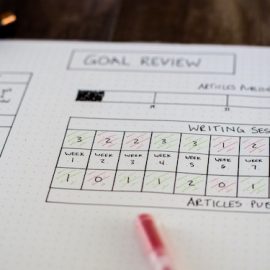

This article is an excerpt from the Shortform book guide to "The Leadership Pipeline" by Ram Charan, Steve Drotter, and Jim Noel. Shortform has the world's best summaries and analyses of books you should be reading.
Like this article? Sign up for a free trial here.
What’s a second-level manager? Are you training employees to become managers?
The second stage of the Leadership Pipeline is the second-level manager. They are in charge of several teams and are responsible for the performance of line managers.
If you’re a second-level manager or are about to be one, continue reading for advice given by experts.
Second-Level Managers Must Coach Line Managers
Second-level managers must train line managers in the basics of management. This can be challenging—evaluating management work is more difficult than judging front-line work, as it’s more abstract. For instance, it’s harder to judge a manager’s ability to delegate than it is to judge the number of deals a salesperson made this month.
(Shortform note: Some experts have tried to deconstruct the idea of management in a way that makes it easier to evaluate. For instance, in When They Win, You Win, Russ Laraway breaks down the task of management into three parts that he calls the “Big Three”: Set clear goals for your employees, effectively coach your employees to reach those goals, and help your employees clarify and achieve their long-term career ambitions. He asserts that as long as a manager does these three things, their team will be motivated and capable of doing great work. Judging line managers on these three criteria may help second-level managers become better coaches.)
When evaluating line managers, second-level managers must be strict but not too strict. They should allow their line managers to make the mistakes they need to learn but shouldn’t hesitate to replace them if they make too many mistakes. The authors argue that leaving ineffective team members in the wrong jobs is one of the most common and harmful errors that organizations make. If just one line manager fails to manage well, they prevent all their subordinates from getting the experience they need if they want to one day become managers themselves. Consequently, the Leadership Pipeline grinds to a halt.
(Shortform note: In The Dichotomy of Leadership, Jocko Willink and Leif Babin share the authors’ belief that ineffective line managers need to be removed. Whereas the authors of The Leadership Pipeline focus on the long-term damage poor managers do to their subordinates, Willink and Babin note that poor management does these workers a disservice here and now: Every time a line manager makes a mistake, it’s harder for their team to accomplish their mission, depriving those team members of the satisfaction of success. That said, Willink and Babin add that it’s important not to be too hasty in removing line managers. Otherwise, second-level managers may repeatedly blame their mentees rather than trying to become better coaches.)
The authors explain that second-level managers are also responsible for judging the management potential of front-line workers and deciding whom to promote. This involves getting to know workers on many teams and devising test projects to measure their capacity to lead.
(Shortform note: Identifying the right front-line workers to promote may involve less formal testing than you think. Often, the workers with the most leadership potential are those who are already respected by their peers. Becoming familiar with a team’s internal dynamics may be all a manager needs to pick out that team’s best candidates.)
Second-Level Managers Must Help Teams Work Together
Finally, second-level managers must facilitate collaboration between the various teams they’re in charge of, write the authors. To do this, they have to learn the basics of their company’s big-picture strategy and clearly communicate that strategy to their subordinates so they can work together to accomplish it.
For example, imagine a second-level manager in charge of multiple teams that are designing a social media application. The company intends to push regular updates to keep users engaged. Knowing this, the manager tells the software development team to code something that can adapt easily to frequent new ideas from the design team.
(Shortform note: When facilitating collaboration between multiple teams, avoid organizing their work in a way that creates dependencies. As Colin Bryar and Bill Carr explain in Working Backwards, a dependency is when a team lacks the resources or agency to accomplish something themselves and must instead rely on another team to do it for them. Over time, dependencies from poorly coordinated work end up wasting countless work hours. Teams are the most productive when they’re working together toward the same goals—which is why making sure they understand the company’s strategy is so important.)

———End of Preview———
Like what you just read? Read the rest of the world's best book summary and analysis of Ram Charan, Steve Drotter, and Jim Noel's "The Leadership Pipeline" at Shortform.
Here's what you'll find in our full The Leadership Pipeline summary:
- Why most organizations end up full of unqualified managers
- The six different levels of management necessary to run any large organization
- The biggest mistake CEOs make that holds them back from success






